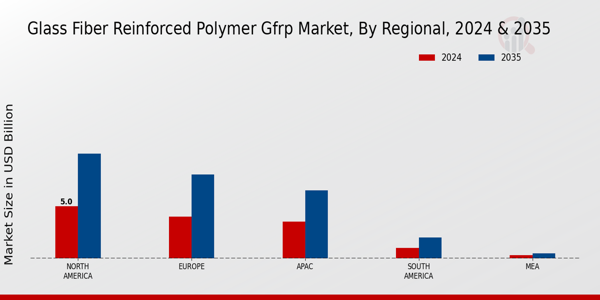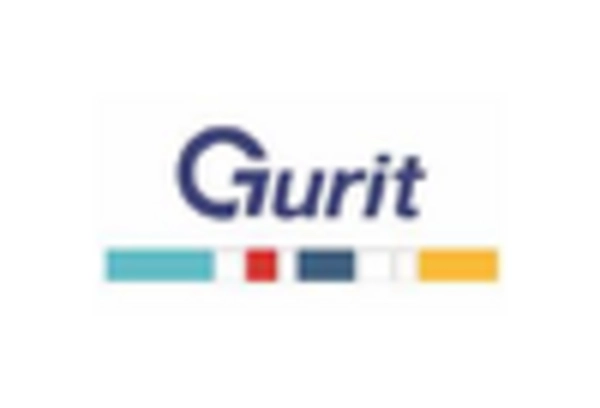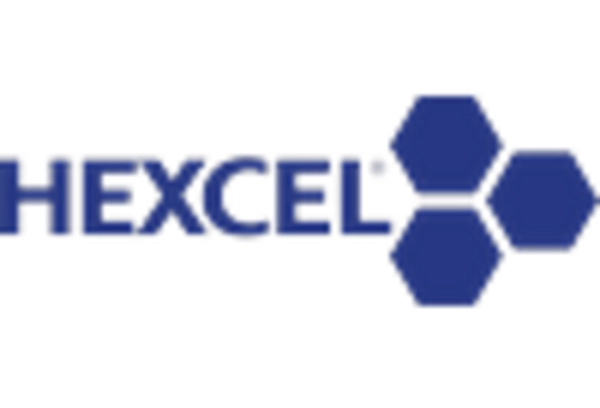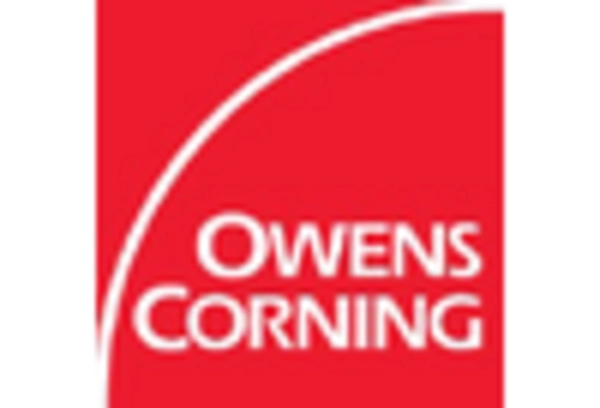Economic Growth
Economic growth is a fundamental driver for the Glass Fiber Reinforced Polymer Market GFRP Market. As economies expand, there is a corresponding increase in infrastructure development and construction activities, which directly boosts the demand for GFRP materials. The construction sector, in particular, is experiencing a renaissance, with investments in new projects and renovations of existing structures. This trend is evident in emerging markets, where urbanization and industrialization are driving the need for innovative building materials. Furthermore, the automotive and aerospace industries are also benefiting from economic growth, as rising disposable incomes lead to higher demand for advanced vehicles and technologies. As of 2025, the GFRP market is projected to grow in tandem with these economic indicators, suggesting a robust future for GFRP applications across various sectors.
Regulatory Support
Regulatory support is emerging as a significant driver for the Glass Fiber Reinforced Polymer Market GFRP Market. Governments worldwide are implementing stringent regulations aimed at enhancing safety and sustainability in construction and manufacturing. These regulations often favor the use of advanced materials like GFRP, which offer superior performance and longevity compared to traditional materials. For instance, building codes are increasingly recognizing the benefits of GFRP in seismic-resistant structures, leading to its wider acceptance in the construction sector. Additionally, incentives for using sustainable materials are encouraging manufacturers to adopt GFRP in their products. As regulatory frameworks continue to evolve, the market is likely to experience accelerated growth, with projections indicating a potential increase in GFRP usage in infrastructure projects by 15% over the next five years.
Diverse Applications
The diverse applications of Glass Fiber Reinforced Polymer Market GFRP are a crucial driver for the market. GFRP is utilized across various sectors, including construction, automotive, marine, and electrical, due to its unique properties such as corrosion resistance, high strength-to-weight ratio, and design flexibility. In the construction sector, GFRP is increasingly used for reinforcing structures, enhancing durability and reducing maintenance costs. The automotive industry is also adopting GFRP for lightweight components, which contribute to improved fuel efficiency and reduced emissions. As of 2025, the market is witnessing a notable increase in the adoption of GFRP in wind energy applications, where its lightweight nature aids in the efficiency of turbine blades. This broad spectrum of applications not only drives demand but also fosters innovation within the Glass Fiber Reinforced Polymer Market GFRP Market.
Sustainability Focus
The increasing emphasis on sustainability is a pivotal driver for the Glass Fiber Reinforced Polymer Market GFRP Market. As industries strive to reduce their carbon footprints, GFRP materials, known for their lightweight and durable properties, are gaining traction. These materials are often produced with lower energy consumption compared to traditional materials, making them an attractive option for environmentally conscious manufacturers. Furthermore, the recyclability of GFRP contributes to its appeal, as companies seek to implement circular economy principles. In 2025, the demand for sustainable construction materials is projected to rise, with GFRP being a key player in this transition. This shift not only aligns with regulatory pressures but also meets consumer preferences for eco-friendly products, thereby enhancing the market's growth potential.
Technological Advancements
Technological advancements are significantly influencing the Glass Fiber Reinforced Polymer Market GFRP Market. Innovations in manufacturing processes, such as automated production techniques and advanced composite materials, are enhancing the performance characteristics of GFRP. These advancements allow for the creation of stronger, lighter, and more versatile products, which are increasingly sought after in various sectors, including construction, automotive, and aerospace. The integration of smart technologies, such as sensors embedded within GFRP structures, is also emerging, providing real-time data on structural integrity and performance. As a result, the market is expected to witness a surge in demand for high-performance GFRP products, with projections indicating a compound annual growth rate of over 10% in the coming years. This trend underscores the importance of continuous innovation in maintaining competitive advantage within the industry.


















Leave a Comment